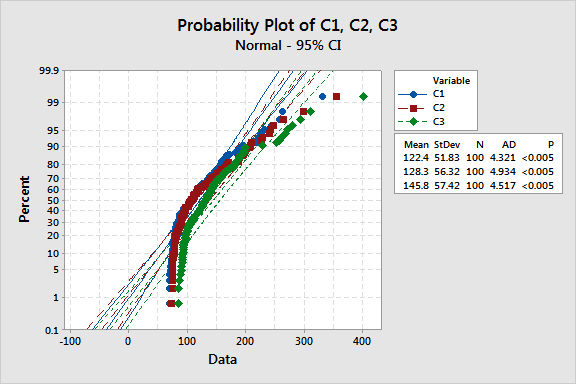The WSPR Challenge database is updated every day at about 3:30 UTC. This is 9 pm local time and well after the 20m band is closed at my QTH. An interesting effect of this is that the unique count that is recorded for my QTH over 24 hours tends to be a bit lower than the actual peak if I measure from say 23:00 UTC. The difference is not usually more than about 10 spots.
I also ran a probability plot of the top 100 unique spots for 20m over a three day period. On a normal probability plot a straight line would indicate a normal probability distribution of received spots. Here are the plots:

C1 & C2 were both the EFHW in vertical configuration. C3 represents the data from the last 20m inverted-V WSPR challenge. The mean is 145.8 vs. my score of 160 unique spots. There is daily ebb and flow in the Mean as I suspect the number of stations and propagation conditions all come into play.
There is a consistency here in that there are three distinct distributions visible. The lower, nearly vertical section represents the lower portion of the WSPR Challenge unique spots where the majority of spots reside. The portion angled at nearly 45° is the region where fairly good performing antennas will be found. The highest scores are largely outliers to the rest of the distribution.
These plots show an amazing consistency.
I have slowly worked my way up this curve on 20m. Early on I could make the WSPR challenge list but would be consistently on the lower distribution. Things improved considerably when I added a 1:1 choke. Noise floor dropped and I started receiving more spots. Are there other factors? Yes, there likely are and what drives the top is really interesting to find out.
One other WSPR performance factor is the ratio of hearing to heard spots when transmitting 1W. Anything above 85% indicates good performance. The Inverted-V showed almost 96% yesterday.
One other














